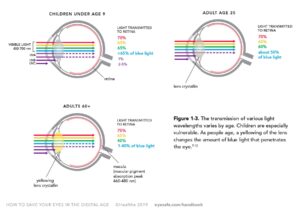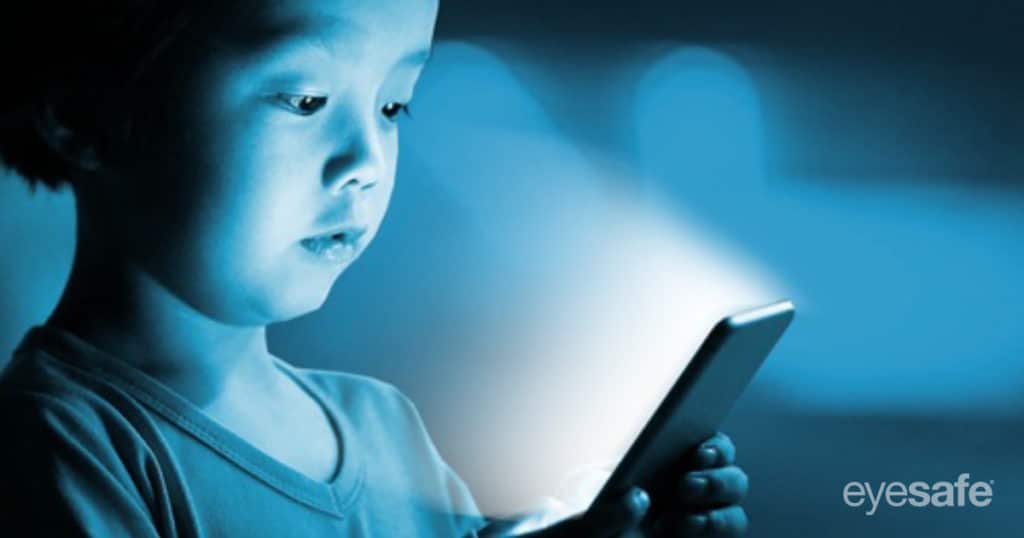
What makes kids more at risk to blue light from digital devices?
The primary reason kids are more vulnerable to potentially harmful blue light emissions is the young eye has minimal defense against blue light. The natural lens of a child’s eye is very clear, especially until the age of 12. Over time, as the lens matures, it builds up a natural yellowing, providing some protection from blue light entering into the eye. Because a child’s lenses are so clear when they are young, they are more vulnerable to blue light emissions and associated risks.
What are the potential risks from blue light exposure?
With increased time on screens, kids are bombarded with the digital blue light which has potential impacts on their vision and health. For example, blue light can disrupt the production of melatonin, which governs our natural sleep cycle. Blue light decreases our melatonin release, which decreases deep sleep. We all know adequate sleep is needed for our immune systems to fight off disease, and to repair and build cells so, there are other factors here to consider, especially with children.
How can parents help protect their children from digital blue light emissions?
I get this question all the time in my practice. There are a range of options to consider.
First, you need to adjust the screen distance between the device and your children’s eyes. I recommend patients hold their device as far from their face as possible. Obviously, this can be challenging with children’s shorter arms, but consider trying to have them set it up on a counter in front of them.
Additionally, I recommend parents reduce the blue light from their device, whether by adjusting the light outputs in the settings or by adding a blue light screen filter. Some newer devices already have blue light protection built-in to the display itself, which is nice because the color quality remains quite clear.
Alternatively, night shift or dark mode can further decrease the blue light exposure on your device, but the color quality is not the same. There are also new options in eyewear and even contact lenses that now filter blue light, like those provided by Transitions or protection built into the lenses like EyeZen technology. Ultimately, we need to have blue light filtering in place to not only help protect our eyes, but also ensure our health is not adversely affected, like disruption to our sleep cycles.
What are your tips to help reduce eye strain related to digital device use?
Similar to decreasing blue light emissions, we can all benefit through healthy screen time habits. Ensuring your displays are properly placed from your eyes and having blue light screen filters on your devices is important. Adjusting your display as far as possible and about 30 degrees below eye level is often most comfortable. Blue light filtering glasses or contacts often help reduce digital eye strain.
Other things to consider is to increase the fonts on your screen so your eyes are not squinting to see things. There’s also a simple practice of the 20-20-20 rule. Look at something 20 feet away for 20 seconds every 20 minutes, take big blinks during the break. Finally, stay hydrated, get up out of your chair, get outside and give your eyes a rest! Take a walk and give your eyes and your body the movement it needs.

Molly serves as Director of The Vision Performance Center at McDonald Eye Care, working with athletes. She also works with children and adults in Vision Therapy for academic and post-concussion management. Dr. McDonald is compensated by Eyesafe for her contributions.
